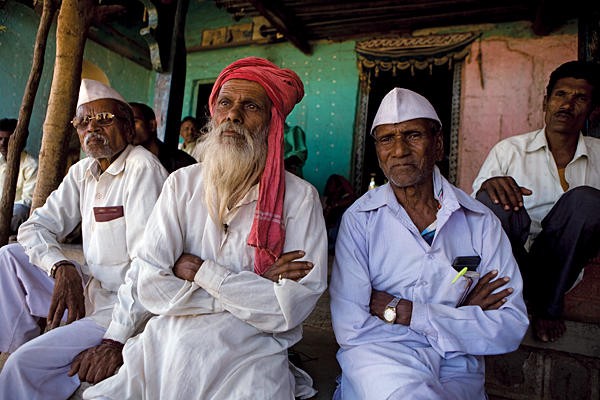Over 12000 farmers have committed suicide in India each year since 2013, with 60% of them driven by high debt or bankruptcy. Since independence, persistent endeavours by the Government of India have aimed to uplift the poor by providing a level playing field. The journey has been tumultuous and rife with challenges, ranging from difficulty in data collection to the navigating the complex delivery system of benefits to the under-privileged. One of the tools for improving the economic conditions of the poor has been financial inclusion i.e. extending financial services and credit to weaker sections of society. Even though the initiative has succeeded in covering 30.84 crore beneficiaries generating over INR 72000 crore worth of deposits in their accounts, the success of financial inclusion hasn’t proved to be a buoyant force for poverty reduction due to high interest rates, lack of infrastructure, and low financial literacy.
One of the principal concerns of policy-makers has been low credit creation at the bottom of the pyramid in the rural areas. Despite being the bank with the largest network in the country, SBI, with a loan book of over 13.4 lakh crores reported a measly 10% of credit dedicated to rural India. Even with the help of NABARD and rural co-operative banks, formal farm credit growth remains tepid at 4.9%. The mandate imposed by RBI on banks to operate 25% branches in rural segment, and presence of Micro-Financial Institutions (MFIs) don’t seem to be bringing the rate of interest down for agriculture even though schemes to do the same remain a striking feature. The lack of transparency in and information on the functioning and financing of MFIs itself has been the subject of much scrutiny. To further infuse accountability, Sudha P. Rao and M.R. Anand have put forth an interesting proposal. They suggest the creation of a single point regulator with a mechanism for monitoring activities by lending entities, and the interest in the creation of new organisational forms offers valuable insights into the future policy developments in the sector.
A possible explanation for high interest rates on loans to agricultural sector lies in risk premiums. Lack of warehouses, credit bureaus, weather houses, commodity markets, awareness on cultivation, and irrigation combined with frequent floods and droughts provide enough reasons for banks to be reluctant to lend capital. Earnings in rural India remain at the mercy of natural factors, and dependent on the total production of crops which acts like a double-edged sword. A good crop pulls down the prices, thereby depressing total income and a bad one pulls up the price without increasing the total income. With low risk in agriculture, the rates of interest in the sector will deflate — and with consistent earnings, financial inclusion will meet its objectives. This will deepen the credit system of the country and further bring down overall rates of interest.
Historically, the Indian peasantry has been largely dependent on the patriarchal Zamindars for support. Despite targeted policy-efforts- including the abolishing of Zamindari system, re-allocation of land, catalysing penetration of banks — the post-independence peasantry is still caught in the rural social hierarchy. The government and RBI need to address the issue of non-availability of formal credit to 86% of farmers, who have one hectare or less of land, due to dependence of credit lending on titles of land holdings. Today, around 41% of total credit is informal due to this reason, and certainly the reason why agriculture is a smaller part in GDP, as it is more prone to supply side shocks and inflationary pressures. With the constant politicisation of loan waiving as a tool for voter appeasement, the already jeopardised financial credibility of farmers further drops — turning a bad situation worse. Absence of bonds to restructure lending of farm loans, as opposed to the UDAY scheme for power sector, makes banks reluctant to restart lending to farmers after events like farm loan waivers which eventually hits the total credit supply to agro-sector and breaks the future cycle of lending. Priority sector lending (PSL) also needs to be revamped, as the credit-to-GDP ratio of 50% in agricultural doesn’t meet the rough estimates of 70% to achieve financial depth.
Changes in the government’s policy approach needs to be supplemented with modified methods of implementation. To ensure a seamless delivery system of benefits to the underprivileged, it is important for them to know their rights, and processes of delivery so that frauds and scams can be reported and thereby nipped in the bud or totally prevented. Many a case of middlemen, often the village Sarpanch, has come to light where they take a “cut” from direct bank transfers to illiterate beneficiaries for operating their accounts. Such instances keep discrimination and abuse alive. Biometric ATMs have proved to be beneficial in African nations. So have mobile wallets. These help do away with middlemen, and barriers of usage. DCB bank, in its pilot project, proved the utility of such devices to improve access of ATMs to rural areas.
In addition to this, the government has to work towards spreading awareness about saving and insurance products in rural India. The lower strata have lived under constant financial duress due to absence of savings. Insurance products need to be given room for innovation, since the direct and narrow directives inhibit their proliferation and application. The decision to give India Post a payments bank license is a welcome step, as it can leverage its 1.4 lakh rural branch network to disseminate banking services. However, the government’s work on financial inclusion is far from done. Unless these gaps in policy and implementation are addressed, the government’s initiative, to positively impact the agricultural sector and double farm income by 2022, will not be realised in totality.
Read more: https://spontaneousorder.in/farmers-middlemen-and-the-way-out/
REFERENCES
1. PRS Legislative Research, 2016–17, State of Agriculture in India
2. IIM Bangalore Review, 2015–16, Thakrom and Kamath, Financial inclusion: Policies and Practice
3. RBI 2016–17 Report on financial stability
4. CGAP, 2016 , India’s push for financial inclusion
5. International Finance Corporation, 2016–17, Report on Financial Inclusion
6. RBI, Mor Committee on Comprehensive Financial Services, 2013
by Aashish Kalra Aashish is working towards his CFA charter. His interests lie in understanding the system, and markets. He has worked with boutique investment management firms, and banks in investment divisions. He likes to read, cycle and write poetry.
Aashish is working towards his CFA charter. His interests lie in understanding the system, and markets. He has worked with boutique investment management firms, and banks in investment divisions. He likes to read, cycle and write poetry.
Post Disclaimer
The opinions expressed in this essay are those of the authors. They do not purport to reflect the opinions or views of CCS.






